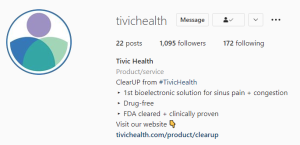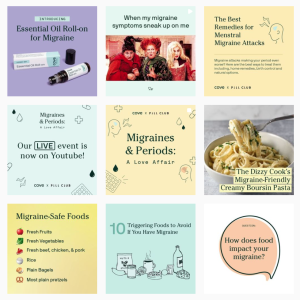Why optimize?
Having a social media presence is a new cultural norm. In fact, according to Backlinko, 56.8% of the world’s population has some sort of social media presence, with the average person having 8.4 different social accounts. That’s a lot of potential touchpoints and opportunities for your brand to have, which is why most businesses create social profiles for their brands. Unfortunately, even with all those billions of users ready to learn about your brand and products, if your social media accounts are poorly optimized, you’ll miss out on valuable opportunities to garner new customers.
The benefits of optimizing on social media are simple. Not only does it strengthen your brand, it increases visibility and reach, which results in greater engagement, clicks, and traffic to your website. Since the cost for organic social is relatively low, the potential for ROI is exponential.
How do you optimize your brand’s social media presence?
The concept of social media optimization (SMO) consists of businesses identifying their goals, analyzing, and auditing their pages as well as their top competitors. You then make adjustments based on your findings, while implementing social media best practices.
Like SEO, SMO consists of a lot of tweaking and A/B testing to find what works best for your industry and brand.
Easy social media optimizations that are worth a try:
Bio optimization
This should go without saying, but it’s often something that is overlooked. The bio section of your profile allows you to quickly introduce your brand to people who may not be aware of your existence. Think of it as an elevator pitch.
Here are some things to consider when updating your bio:
- Include relevant information: who are you, what are you known for, and more importantly, why should people care? Remember to make your copy digestible.
- Don’t just include your website in the bio — encourage people to visit. Pairing your website link with a CTA often accomplishes this.
- Include a catchall hashtag, one that you want your followers to use when talking about your brand or products.
- If applicable, include your business hours.

Optimize your content based on platform
There is no one-size-fits all when it comes to social content. All platforms are drastically different. What may work on Instagram is not guaranteed to work on Twitter, and vice versa. The most successful brands on social media are the ones that have different goals for each network they’re on, and a content strategy tailored to help reach those goals.
Optimizing content by social platform can be as simple as:
- Sizing images and videos according to best practices for each platform. You can find a guide outlining the optimal image sizes for each network here.
- Experimenting with different types of content and implementing a strategy for each network:
- Instagram is visually driven, so focus on beautiful, creative content.
- Links tend to perform better on Twitter and Facebook.
- Longer form content and videos tend to work best on Facebook.
Keep in mind that the above statements should be guidelines to experiment with. Don’t be afraid to test things out. Ultimately, the only way to find out what works for your brand is by testing new approaches.
- When in doubt, focus on engaging visuals and text.
Mix up your content focus
According to a report by Hubspot, 21% of consumers will unfollow a brand on social media due to repetitive content. If your brand sells products for migraine care, don’t just focus on posting content that highlights your product and its benefits. Mix things up by including facts, tips, statistics, and relatable content for migraine sufferers in addition to promoting your product as a solution. By taking this approach, you’re positioning yourself as an expert in the migraine field — not just a brand that sells migraine products.

Relevant hashtags
Hashtags are not only beloved and used by most, they’re also a great way to reach new people organically. Here are some tips to make the most out of your hashtag use:
- Mix them up. It’s easy to get in the habit of reusing the same hashtags repeatedly. When you stick to a narrow list of hashtags, you limit your audience reach.
- Avoid popular hashtags. The rule of thumb is to leverage hashtags that have between 5K and 500K posts. #CraftBeer may be relevant to your post if you’re a brewery, but since the hashtag is so popular, you’re competing against 32 million submissions that also use that hashtag. The odds of your post standing out are slim. By sticking to the 5K – 500K rule you’re more likely to be listed towards the top and not be completely drowned out by other posts.
- Use the allotted number of hashtags. The following tip is only applicable to Instagram. Instagram allows up to 30 hashtags per post, so take full advantage of that! Each hashtag creates a new opportunity to reach new people.
Be active
Lastly, be active. There’s a fine line between being too active; coming across as spammy, or simply allowing your followers to forget about you. The posting cadence for each industry and platform varies, so we recommend leaning on Rival IQ’s Social Media Industry Benchmark Report to figure out what your posting cadence should be.
According to the Hubspot report we referenced earlier, 19% of consumers will unfollow due to frequent posting. Other reasons include too much clutter, and lack of engagement on the posts.